A SCHOOL HAS 3 - 4 TUITION LEVELS
Currently, training institutions determine university tuition fees based on the Decree amending and supplementing a number of articles ensuring regular expenditures, public schools ensure regular expenditures of Decree 81/2021 regulating the mechanism of collecting and managing tuition fees for educational institutions in the national education system and policies on exemption, reduction of tuition fees, support for learning costs; service prices in the education sector (Decree 97).
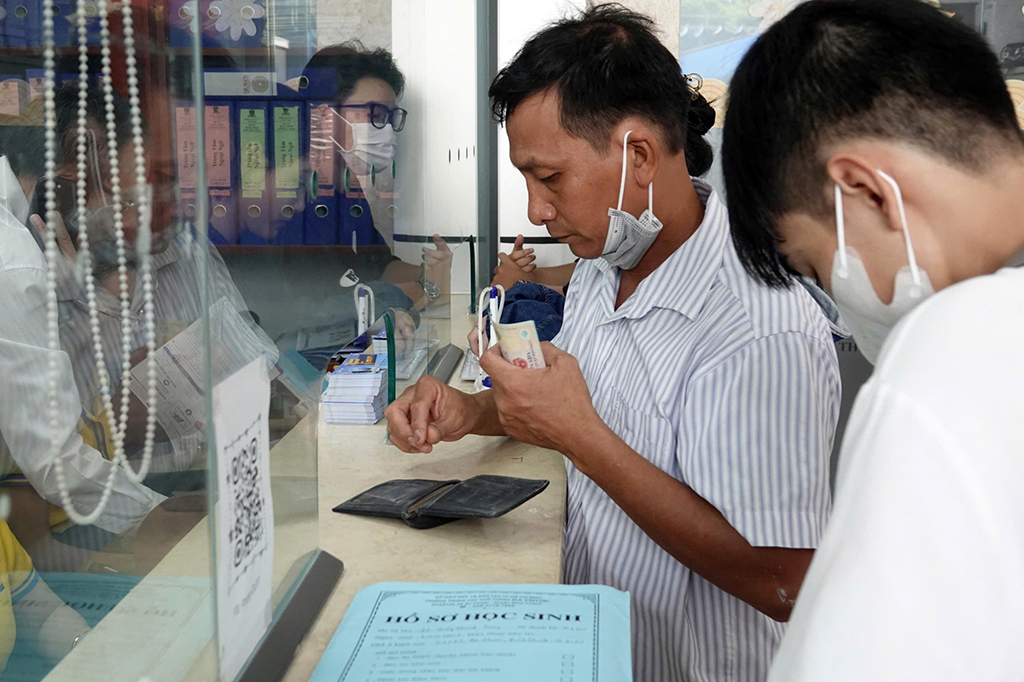
Parents pay tuition fees to complete admission procedures for their children admitted to university this year.
PHOTO: DAO NGOC THACH
Decree 97 stipulates that HP has many levels according to each type of school: non-autonomous public schools (not yet able to ensure regular expenses), public schools that are self-sufficient in regular expenses, public schools that are self-sufficient in regular expenses and investment expenses.
Public universities that have not yet covered their regular expenses, the tuition fee for the 2023-2024 school year ranges from 12 to 24.5 million VND/school year (10 months). By the 2026-2027 school year, the tuition fee for this group of schools will increase to 17.1 to 35 million VND/year.
For public universities that cover their regular expenses, the maximum tuition fee for the 2023-2024 school year is 24-49 million VND/year and increases to 34.2-70 million VND for the 2026-2027 school year.
In particular, for the group of public schools that self-finance regular and investment expenditures, the maximum tuition fee for the 2023-2024 school year is 30 - 61.25 million VND and increases to 42.75 - 87.5 million VND for the 2026-2027 school year.
In addition, private schools are autonomous in setting tuition fees; public schools are autonomous in determining tuition fees for programs that meet quality accreditation standards based on economic and technical norms issued by the school, and are publicly accountable to learners and society.
Within the HP ceiling of the decree, universities build and issue HP collection levels for the 2024 - 2025 school year at many levels. Most HP of mass programs are over 10 million VND to over 50 million VND. But besides that, a series of universities build additional special programs with much higher HP such as: high quality, English teaching program, high quality program taught in English...
Professor, Doctor of Science Bui Van Ga
Even in the same public school, while the general program costs over 35 million VND/year, the high-quality program charges up to 70-83 million VND/year, and the high-quality program taught in English charges up to 165 million VND/year. With such a program structure, universities are charging much higher tuition than the lowest level of the standard program.
Meanwhile, the transition to autonomy for public universities is an inevitable trend in the coming time. According to the document of the Ministry of Home Affairs on the arrangement of public service units under the Ministry of Education and Training, by the end of 2025, university training units under the Ministry of Education and Training will simultaneously implement a roadmap to increase the level of financial autonomy from the level of ensuring regular expenditures and above. Thus, university tuition fees will not only increase each year according to the prescribed framework but also expand the number of schools eligible to collect higher tuition fees.
ARE TUITION FEES HIGH COMPARED TO GDP /CAPITAL?
GDP/capita is one of the important criteria for assessing the adjustment of the HP level. Regarding the adjustment of HP according to Decree 97, the Ministry of Education and Training compared the HP ceiling of the group of schools that have not self-financed regular expenditures on GDP/capita in 2015 (school year 2015 - 2016) with that in 2023 (school year 2023 - 2024).
Specifically, GDP/capita in 2015 was 45.7 million VND, in 2023 it was 101.9 million VND (2.23 times increase). If we take the ceiling HP of some sectors at the above 2 points in time for comparison, we see that HP does not actually increase, even decreases in most sectors (except medicine and agriculture). For example, the STEM sector (science - technology - engineering - mathematics) in the 2015 - 2016 school year was 720,000 VND/month, in the 2023 - 2024 school year it is 1.45 million VND/month (2.01 times increase).
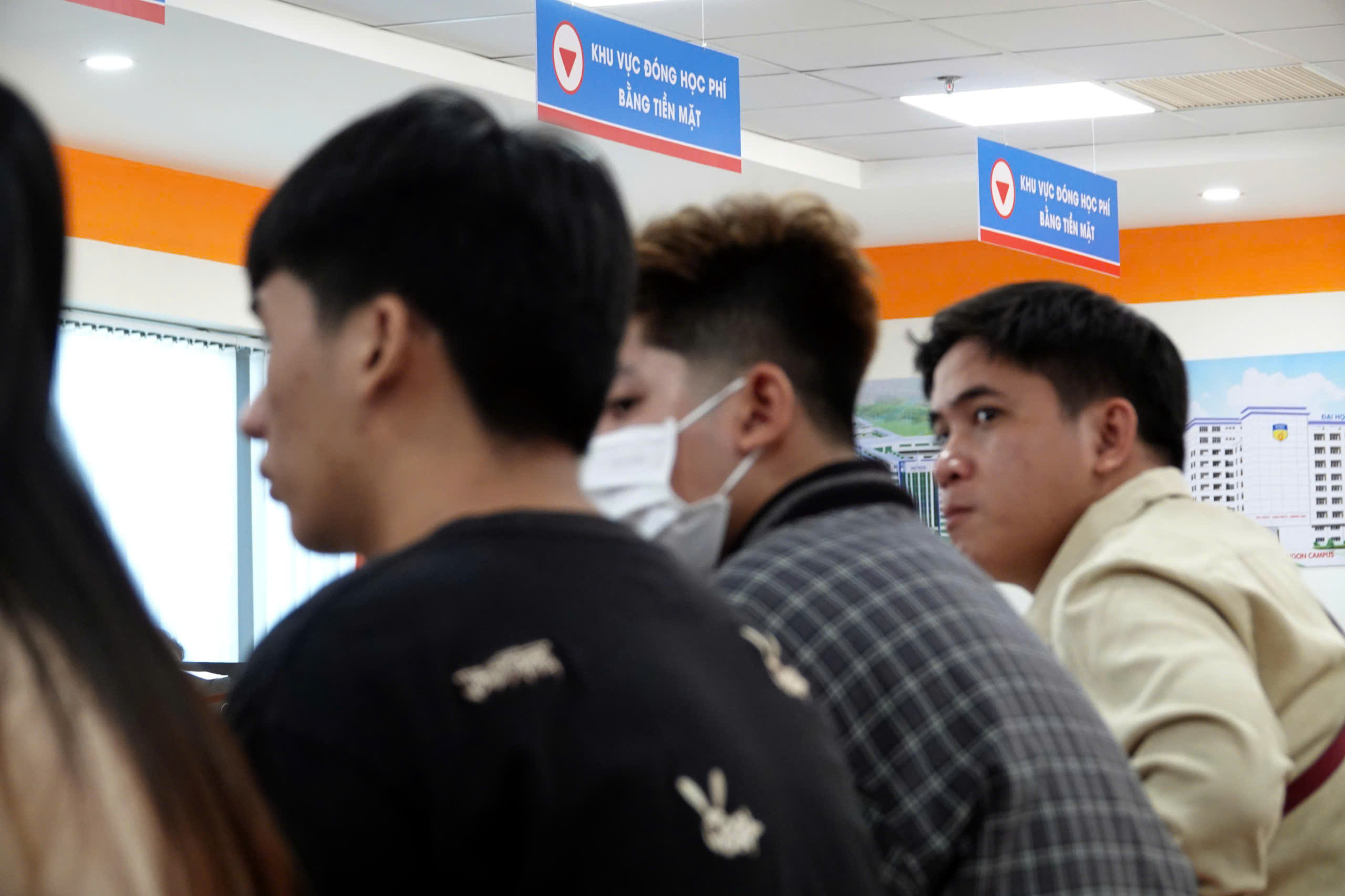
In the 2024-2025 school year, tuition fees at universities range from over 10 million to over 800 million VND/year.
PHOTO: DAO NGOC THACH
The Head of the Finance Department of a University in Ho Chi Minh City also said that GDP/capita is a basis for evaluating the university level HP scale.
According to this expert, the US GDP per capita is about 76,000 USD, the average university tuition for American students at public schools is about 15,000 USD. The indicators are similar in the UK. Thus, the tuition fee is built in the range of 20 - 25% of GDP per capita which is considered reasonable to match the average income level in society.
"If in Vietnam, the average GDP per capita is about 100 million VND (in 2023), then the tuition fee of public universities is about 25 million VND/year. At this level, the ratio of HP to average GDP will be equivalent to the calculation method of the US, UK or Australia," the head of this department analyzed.
In the 2024-2025 school year, the hypothetical level of HP is 20-25 million VND/year. Compared to the group of non-autonomous schools, this level is higher for some majors. However, it is lower in some majors of the group of schools that are self-sufficient in regular expenses, much lower in the group of schools that are self-sufficient in regular expenses and investment expenses. In particular, this level is much lower than the special training programs of universities.
"For fields with high training costs and necessary for society (such as medicine), the State can consider policies to support training schools or directly sponsor students studying in this field. For example, it is possible to apply the policy of exempting HP and providing living expenses like for pedagogical students for the field of training medical doctors," this expert suggested.
Professor Bui Van Ga, former Deputy Minister of Education and Training, also said: "We should refer to the HP level on the average income per capita of developed industrial countries and developing countries to assess the level of suitability with reality. Collecting high HP, beyond the payment level of ordinary people is not a good solution, because students currently have many choices of studying domestically or studying abroad." (continued)
It is necessary to increase the budget for university education.
According to the summary report of 10 years of implementing Resolution No. 29-NQ/TW dated November 4, 2013 of the 11th Party Central Committee on fundamental and comprehensive innovation of education and training to meet the requirements of industrialization and modernization in the context of a market economy, socialist orientation and international integration of higher education, investment in higher education from the state budget is still very low and tends to continue to be cut, not meeting the needs of development and innovation of training activities. Budget allocation is still inadequate, the budget allocated for training activities is low, not ensuring the expenditure structure for higher education. Many public higher education institutions do not have enough financial resources to cover training costs and reinvest to improve training quality; have not attracted many non-state resources to invest in education development, socialization is not really associated with social justice in education. It is necessary to increase investment budget for university education and strongly innovate financial mechanisms and policies for university education.
According to this report, the target by 2030 is that the total national expenditure for higher education will increase by an average of twice the annual GDP growth rate, reaching 1.5% of GDP by 2030. Increase the state budget expenditure for higher education to reach the GDP ratio equal to the average level of countries in the region and the world, while perfecting policies to encourage investment from the private sector; focus on investing in synchronous development of technical infrastructure for higher education institutions, especially key national higher education institutions with the role and task of leading the system.
Notable in this report is the strong innovation of financial mechanisms for university education, allocation of state budget according to capacity and efficiency, strengthening socialization to encourage enterprises to cooperate in training and scientific research with university education institutions associated with expanding financial policies to support learners, not letting anyone lose the opportunity to study at university due to economic conditions.
Source: https://thanhnien.vn/hoc-phi-dh-da-phu-hop-voi-muc-song-185240902211700742.htm


![[Photo] Keep your warehouse safe in all situations](https://vphoto.vietnam.vn/thumb/1200x675/vietnam/resource/IMAGE/2025/10/1/3eb4eceafe68497989865e7faa4e4d0e)
![[Photo] Hanoi morning of October 1: Prolonged flooding, people wade to work](https://vphoto.vietnam.vn/thumb/1200x675/vietnam/resource/IMAGE/2025/10/1/189be28938e3493fa26b2938efa2059e)


![[Photo] President of the Cuban National Assembly visits President Ho Chi Minh's Mausoleum](https://vphoto.vietnam.vn/thumb/1200x675/vietnam/resource/IMAGE/2025/10/1/39f1142310fc4dae9e3de4fcc9ac2ed0)

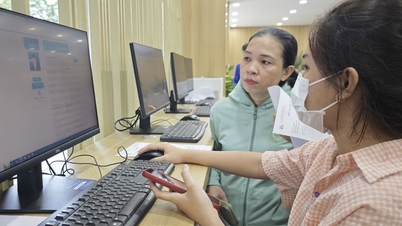




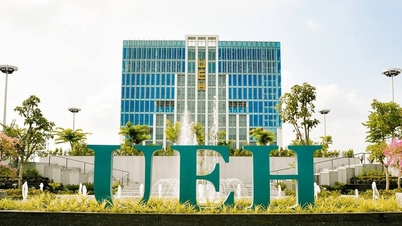

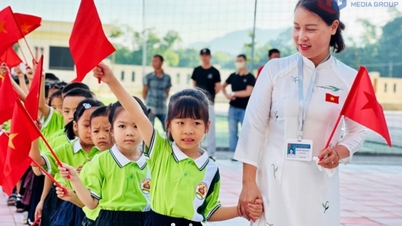









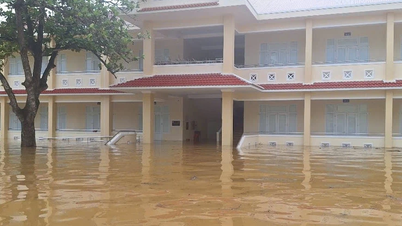






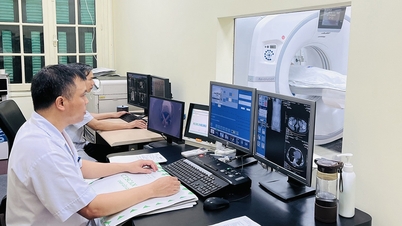








































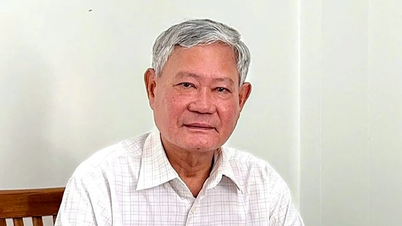
























Comment (0)